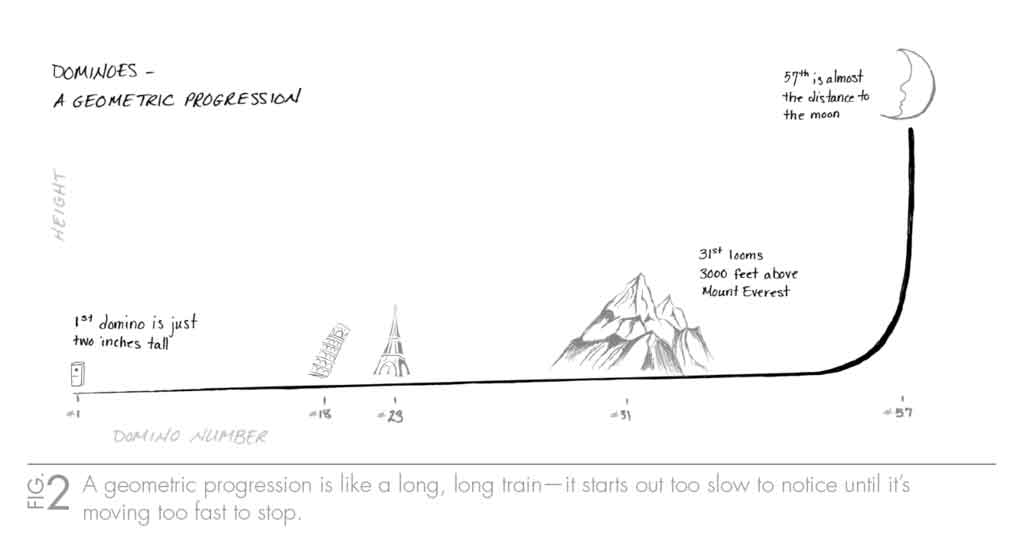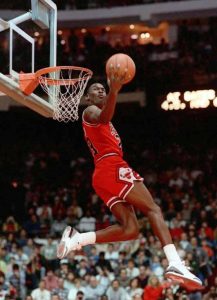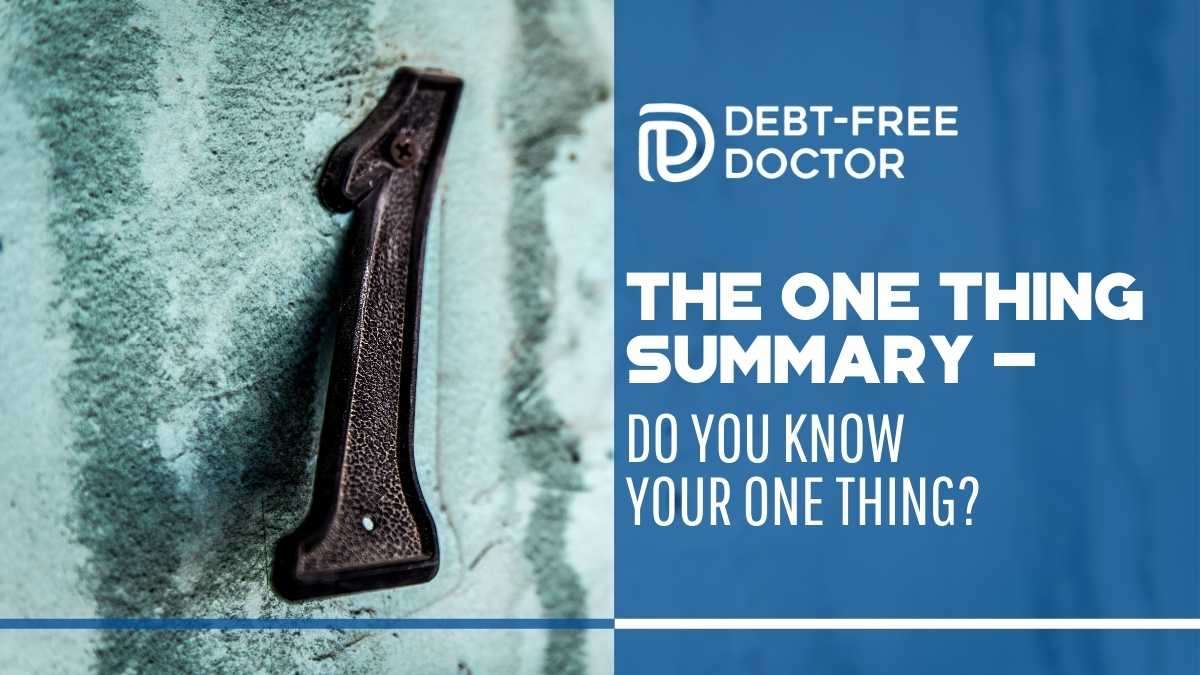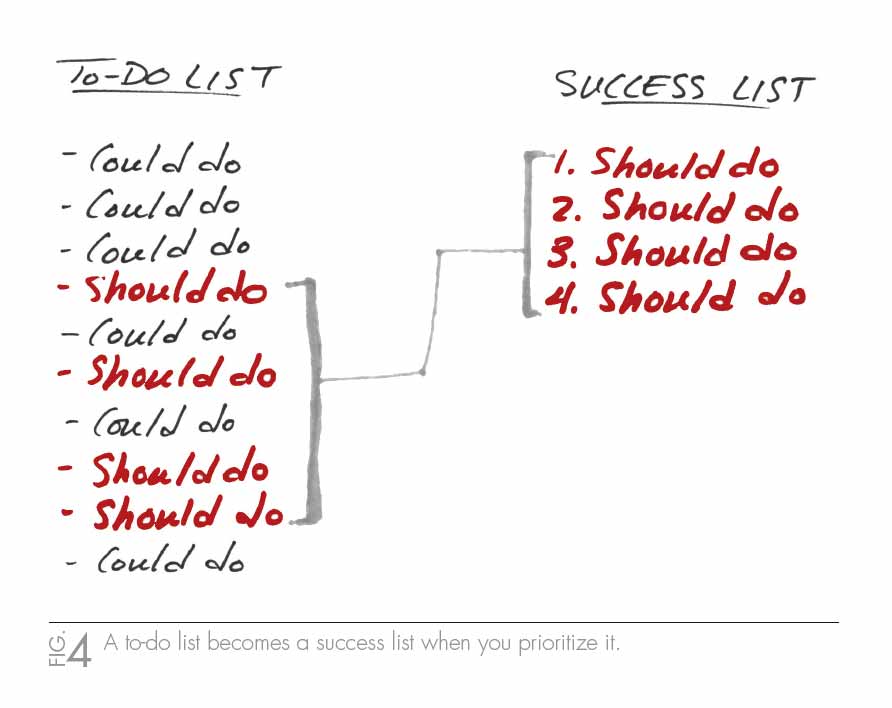The ONE Thing Book Summary
I remember first reading The ONE Thing by Gary Keller and Jay Papasan shortly after it was released in 2012.
Back then, I didn’t know what my one thing was.
Recently after watching Jay Papsan’s Wealth Building With The ONE Thing & Millionaire Series talk he gave at Google (see video below), it inspired me to take it off the bookshelf for another read.
Now, after rereading it eight years later, it’s become much clearer what I should be focusing on and what I should be avoiding.
Since I first read it, my life has become much busier with distractions as I’m sure yours has too.
I’m constantly bombarded with emails, texts and calls that keep me from doing my most important work. Let’s also not forget about spending time with family family and staying in shape. All these demands take a toll.
If you’re a frequent reader of this blog, you know that I’m passionate about teaching others how to build streams of passive income to reach FIRE quicker to stop trading time for money.
This is also a major personal goal of mine too.
But the challenge I face (and you might too) is that it’s NOT the only goal. I set other types of goals both personally and for my family. So if I make progress on one goal, many times it means losing progress on another.
In my case, I can choose to work toward any number of goals today, but the truth is that progress on some goals means none or even potentially negative progress on others.
It’s now become clear that I need help with a method of prioritizing goals which is why I’m so glad that I reread the book.
Here’s The ONE Thing Summary that will also help you with goal setting and achieve what you’re striving for.
Let’s get going…
The ONE Thing Summary
Here’s Sam Davies’ The ONE Thing Summary in three sentences:
- The ONE Thing is the best approach to getting what you want.
- Success is a result of narrowing your concentration to one thing.
- Success is built sequentially, one thing at a time.
Who This Book Is For
This book is for anyone:
- Having a tough time that feels as if they have too much on their plate
- Constantly trying to do too many things at once
- Hoping to become more productive
I guess this book is for me as I fit all categories.
Go Small
Gary Keller explained in areas that he gained success, he had a clear sense of priority and extraordinary focus on one thing.
He claimed that, “When you want better results and the absolute best chance to succeed at anything you want, your approach should always be the same. Go small.”
This concept really hit home with me as I have to constantly remind myself to ignore all the things I could be doing and only focus on what I should be doing.
So instead of focusing on 10-20 things, go small and focus on one.
The Domino Effect
My kids and I loved this story both in the book and in the video below.
In The ONE Thing, the authors discussed something called the “domino effect.”
They mentioned a study performed by a physicist that found if someone pushed over a domino, it then can knock over another one that’s 50% bigger.
So if you start with knocking over the first domino(2 inch) then:
- the 10th domino would be as tall as Peyton Manning
- the 18th domino would be the size of the Tower of Pisa
- the 23rd the size of the Eifel Tower
- the 31st taller than Mount Everest
- the 57th would nearly get you all the way to the moon
Check out this illustration from the book via NJLifehacks.com:

Here’s a video testing the domino effect theory:
Most people know how to knock over dominos. You line them up and tip over the first domino which starts a reaction knocking over one at a time.
But in the real world, things aren’t so straight forward. I don’t know about you, but life hasn’t lined everything up to tell me where I should start.
In the book, we come to realize that highly successful people know that any given day, they must line up their priorities in order, which means knocking over that lead domino first until it falls.
They know that BIG success is sequential, not simultaneous. You do the right thing and then you do the next right thing and over time it begins to add up.
It’s all about lining up the domino, giving it all of our attention, knocking it over, and then lining up the next domino. One thing at a time.
Over a long enough time period, big things will happen.
Don’t Miss Any Updates. Each week I’ll send you advice on how to reach financial independence with passive income from real estate.
Sign up for my newsletterSuccess Leaves Clues
Reminiscing back to dental school, I thought I could succeed alone. I was wrong. In The ONE Thing, we learn that no one succeeds alone.
We each have passion and skills, but you’ll see extraordinary successful people with ONE intense emotion or one learned ability that shines through, defining them or driving them more than anything else.

This makes me think of Michael Jordan. Not only was he one of the greatest basketball players ever to play the game, his drive and passion always showed through while playing.
The Lies
The book discusses six lies that mislead and derail us.
The Six Lies Between You and Huge Success
- Everything Matters Equally
- Multitasking
- A Disciplined Life
- Willpower Is Always on Will-Call
- A Balanced Life
- Big Is Bad
#1 Everything matters equally
My grandmother used to say, “Son, make good decisions.”
But when our lives are defined by our decisions, the important question becomes, How do we make good ones?
Also, the older I get, the more it seems must get done. I’m overbooked, overextended and over committed.
When everything feels urgent and important, everything seems EQUAL.
The problem with that is if you constantly split your attention, you’re never able to bring intense focus to a single thing that will bring a successful life.
Many of us (myself included) use a to-do list. Keller recommends using a “success” list instead.
To-do lists are long where as success lists are short. One pulls you in all directions; the other aims you in a SPECIFIC direction.
If your to-do list contains everything, then it’s probably taking you everywhere but where you really want to go.
So what should we do?
The answer is simple, enter the 80/20 Principle
80/20 Principle
You’ve probably heard of the Pareto Principle (AKA 80/20 rule). It states that 80% of your results come from only 20% of your efforts.
If that’s the case then we should focus on the few things that truly matter. After doing that, we can then take those 20% again and narrow it down even further. So ultimately, we only have one domino to focus on…then we start off by knocking it over.
Here’s an example from the The ONE Thing on how to convert a to-do list into a success list:
#2 Multitasking
This chapter in the book made a big impact on how I now go about getting things done. I used to be big on multitasking as it always seemed to be a good idea on the surface.
But when you try to do two (or more) things at once, you either can’t or won’t do either well.
It’s not that we have too little time to do all the things we need to do, it’s that we feel the need to do too many things in the time we have.
Instead, we should avoid multitasking as much possible and focus on the one task that’s most important.
Multitasking includes any other types of distractions such as cell phones. For instance, if you’re at your desk doing work with notifications coming in left and right, you’re basically multitasking waiting to check them as they pop up.
I get more work done when I completely power down my cell phone instead of just putting it on silent.
When I’m focusing on performing my ONE thing, I want a distraction-free environment.
Join the Passive Investors Circle#3 A Disciplined Life
We’ve all been told at some point in our life that we have to be a disciplined person in order to become successful.
The ONE Thing says differently. The truth is we don’t need any more disciple than we already have. We just need to direct and manage it a little better.
Success is about doing the right thing, not about doing everything right.
The trick to success is to choose the right new habit and bring just enough discipline to establish it.
When you do the right thing, it can liberate you from having to monitor everything.
#4 Willpower Is Always on Will-Call
I liked the way the author described willpower. He compared it to something like a cell phone that has a rechargeable battery.
What happens to your phone’s battery life throughout the day? If you charge it overnight then it starts off with a full charge, right?
But as it’s being used, slowly the juice starts to deplete until either it’s recharged again or it powers off.
Willpower is no different. Once it’s out of juice, it too needs recharging. You can’t always have 100% willpower.

Here’s a perfect example: I love sweets. Whenever I go to a party for an extended period of time, I notice at first I’ve got full-strength willpower.
But the longer I stay, the harder it is to not dig into those darn chocolate chip cookies!
Because your willpower, like a rechargeable battery, decreases throughout the day, you should focus using your willpower on the important areas of your life.
What’s the absolute most important thing you need to do today to move forward on the things you want to achieve in life? Use your willpower to accomplish that.
#5 A Balanced Life
We routinely hear that we should have a stable work life balance but the authors disagree.
They recommend a better approach: counterbalance
After you give intense focus to the important area of your life for a set period of time, you should then counterbalance it and put other areas front and center for a while.
An example of this comes from those of us with kids still at home. For me, my focus shifts to more family time/vacations and coaching them in the summer when they’re out of school.
Because of this, I’ll have a major focus of researching/writing articles in the spring to get ready for the summer months. This is my counterbalance.
#6 Big Is Bad
When people set really BIG goals, many times they give up as it usually takes a tremendous amount of time and energy to achieve them.
The authors recommend looking at the things achieved in life as a rectangle. The bigger the area of the rectangle, the bigger the achievement.
They stated that the dimensions of the rectangle are determined by two factors:
- thinking/planning
- effort
We use both of these when trying to accomplish a big goal and if you put in equal amounts of both, you can expect to accomplish a larger important goal with less effort.
Do you remember what Abraham Lincoln said regarding chopping down a tree?
“Give me six hours to chop down a tree and I will spend the first four sharpening the axe.” – Abraham Lincoln
The Focusing Question
After reading countless numbers of books on how to better raise our kids, my wife and I noticed a recurring solution, “ask questions“.
One of the top ways to influence someone is in fact to “ask questions”.
Voltaire once wrote, “Judge a man by his questions rather than his answers.”
Dr. Robert Cialdini has a fantastic book, “Influence The Psychology of Persuasion“. If you haven’t read it, do so soon. It will help you in all aspects of your life.
One of the most empowering moments of Keller’s life came when he realized that life is a question and how we live it is our answer.
Because of this, he recommended using a key focusing question before you decide on doing something during the day that you may or may not think is important.
Get it?
It seems that they are wanting you to ask YOURSELF a question so you can in turn influence yourself.
That question is:
What’s the ONE thing I can do such that by doing it everything else becomes easier or unnecessary?
Once you come up with an answer then that’s what you should be focusing on.
It forces you:
- to prioritize
- focus on one thing
- be specific
And by doing this, it then directs you to take action.
“How we phrase the questions we ask ourselves determines the answers that eventually become our life.”
Here’s a few examples using The Focusing Question:
For your financial life:
- What’s the ONE Thing I can do to increase my net worth… ?
- What’s the ONE Thing I can do to improve my investment cash flow… ?
- What’s the ONE Thing I can do to eliminate my debt… ?
For your spiritual life:
- What’s the ONE Thing I can do to help others… ?
- What’s the ONE Thing I can do to improve my relationship with God… ?
Let’s shift The ONE Thing Summary to successful habits…
Don’t Miss Any Updates. Each week I’ll send you advice on how to reach financial independence with passive income from real estate.
Sign up for my newsletterThe Success Habit
Now that we’ve learned about the Focusing Question, it’s not too hard to guess what the success habit is….using that focusing question for every area of your life in order to achieve BIG results.
Many readers of this site come to me looking for ways to achieve financial independence.
After they sign up for the Passive Investors Circle, I have a phone call with them to discuss their goals.
Many times they have multiple ones and we focus on narrowing them down to one or two.
Then, I instruct them to get into the “success habit” of asking themselves the focusing question:
“What’s the ONE thing I can do to move myself toward financial independence such that by doing it everything else becomes easier or unnecessary?”
The Four Thieves Of Productivity
In our The One Thing Summary, we learn about the four thieves of productivity that you should avoid.
- Inability to Say “No”
- Fear of Chaos
- Poor Physical Health Habits
- Environment Doesn’t Support Your Goals
Inability to Say “No”
I’m sure you know someone that can never tell someone “no”. My wife is one of those people. Looking back, I used to be that person too until kids, work and other activities have taken over my life.
If I don’t set boundaries and tell others “no”, I won’t be able to connect with my ONE Thing.
Too many people are afraid of hurting others feelings by telling them “no”. If that’s you, think about coming up with a way to say it in a way that you’re comfortable with.
Fear of Chaos
If you’re in a relationship, have kids and a job, then your life can be chaotic at times. Trust me I know, it’s normal.
Things aren’t always going to go in our favor. Stuff happens. That’s okay.
But it doesn’t mean you should give up on your ONE Thing. Over time, you’ll learn how to deal with it so it doesn’t control you.
Poor Health Habits
Our pastor once told the story of a 95-year old multi-millionaire that asked a college student to trade places with him. He told him that he’d have all the money that he’d ever need.
The young man declined saying, “What does it matter to have money if I can’t get out of bed and enjoy it?”
When’s the last time you were sick? Not fun, right?
If you’re not healthy then you won’t be productive.
Your health and your success depend on each other to survive and thrive.
The authors recommend that we:
- Exercise
- Medidate/pray
- Focus on being content with what we have
- Enjoy family/friends
Environment Doesn’t Support Your Goals
An article from Forbes magazine sums it up best, “Surrounding Yourself With The Right People Changes Everything.”
Oprah tells us, “Surround yourself only with people who are going to lift you higher.”
If you’re around negative people that constantly shoot you and your ideas down, it’s going to be next to impossible to achieve your ONE Thing.
The Three Commitments
As we close out The ONE Thing summary, the author recommends that we commit to three things to make all of this work:
- Follow the Path of Mastery
- Move from “E” to “P”
- Live the Accountability Cycle
Follow the Path of Mastery
You’ve probably heard the phrase, “Life’s a marathon and not a sprint. Enjoy the journey along the way to your destination.”
Often, the “one thing” is really about building up a particular skill to a high level through deliberate practice.
As we try to achieve that big specific thing we’re aiming for, we should be building mastery of particular skills along the way. That’s part of the journey.
Move from “E” to “P”
Keller teaches us that most people have an Entrepreneurial “E” mindset. These people typically aim for being “good enough.”
Instead, he recommends, that we should aim for becoming as skilled at something as you can be, which he calls “P” or “purposeful.”
It’s a constant commitment to growing, building skill, and improving, even when you’re already “good enough” to achieve a low level of success. Lifelong learning and deliberate practice are the tools.
Live the Accountability Cycle
Too many people suffer from “exuse-itis.” If you’re not where you want to be in life, it’s nobody’s fault but your own.
Ultimately your success comes down to…..YOU.
There’ll always be obstacles and unexpected events.
Don’t let your environment control you, control the environment.
There’s too many people that point fingers and blame others but never look in the mirror to take ownership of their own lives. Once you take responsibility, you’re in control of your destiny.
The ONE Thing Summary – Final Thoughts
Whether you know what your ONE Thing is or not, reading this book will help you figure out what you really want out of life and how to achieve it.
I realized after re-reading this book a second time, I needed to focus on blocking out my time, and eliminating distractions that were keeping me from doing my ONE Thing daily.
What really helped me was relearning the focusing question which is something I’m using more at work and with my personal life.
This question is a powerful director of keeping me focused on my ONE Thing and avoiding all those other little pesky things that pop up during the day that I used to “think” needed to be done.
Join the Passive Investors Circle


